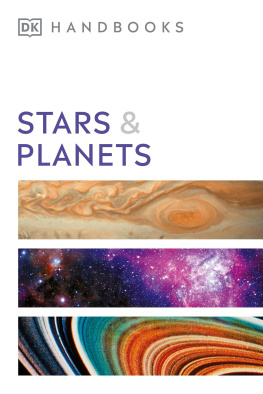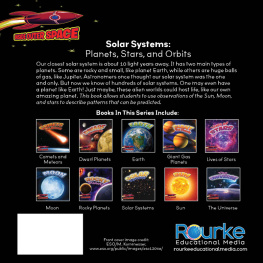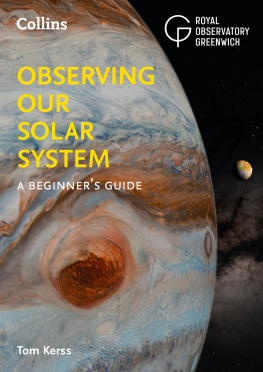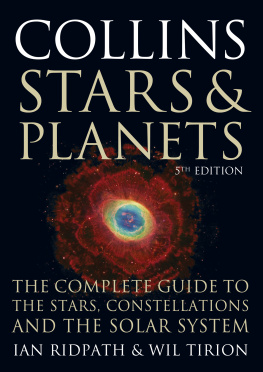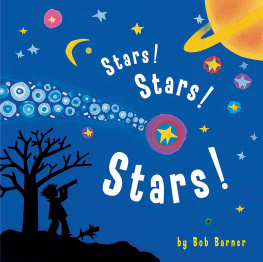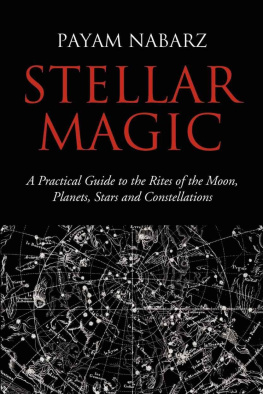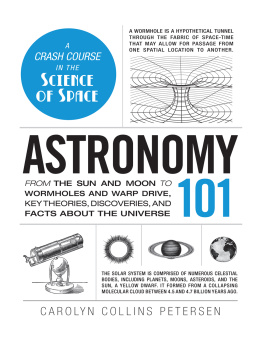Ian Ridpath - Collins Stars and Planets Guide
Here you can read online Ian Ridpath - Collins Stars and Planets Guide full text of the book (entire story) in english for free. Download pdf and epub, get meaning, cover and reviews about this ebook. publisher: HarperCollins Publishers, genre: Children. Description of the work, (preface) as well as reviews are available. Best literature library LitArk.com created for fans of good reading and offers a wide selection of genres:
Romance novel
Science fiction
Adventure
Detective
Science
History
Home and family
Prose
Art
Politics
Computer
Non-fiction
Religion
Business
Children
Humor
Choose a favorite category and find really read worthwhile books. Enjoy immersion in the world of imagination, feel the emotions of the characters or learn something new for yourself, make an fascinating discovery.
- Book:Collins Stars and Planets Guide
- Author:
- Publisher:HarperCollins Publishers
- Genre:
- Rating:5 / 5
- Favourites:Add to favourites
- Your mark:
- 100
- 1
- 2
- 3
- 4
- 5
Collins Stars and Planets Guide: summary, description and annotation
We offer to read an annotation, description, summary or preface (depends on what the author of the book "Collins Stars and Planets Guide" wrote himself). If you haven't found the necessary information about the book — write in the comments, we will try to find it.
Collins Stars and Planets Guide — read online for free the complete book (whole text) full work
Below is the text of the book, divided by pages. System saving the place of the last page read, allows you to conveniently read the book "Collins Stars and Planets Guide" online for free, without having to search again every time where you left off. Put a bookmark, and you can go to the page where you finished reading at any time.
Font size:
Interval:
Bookmark:
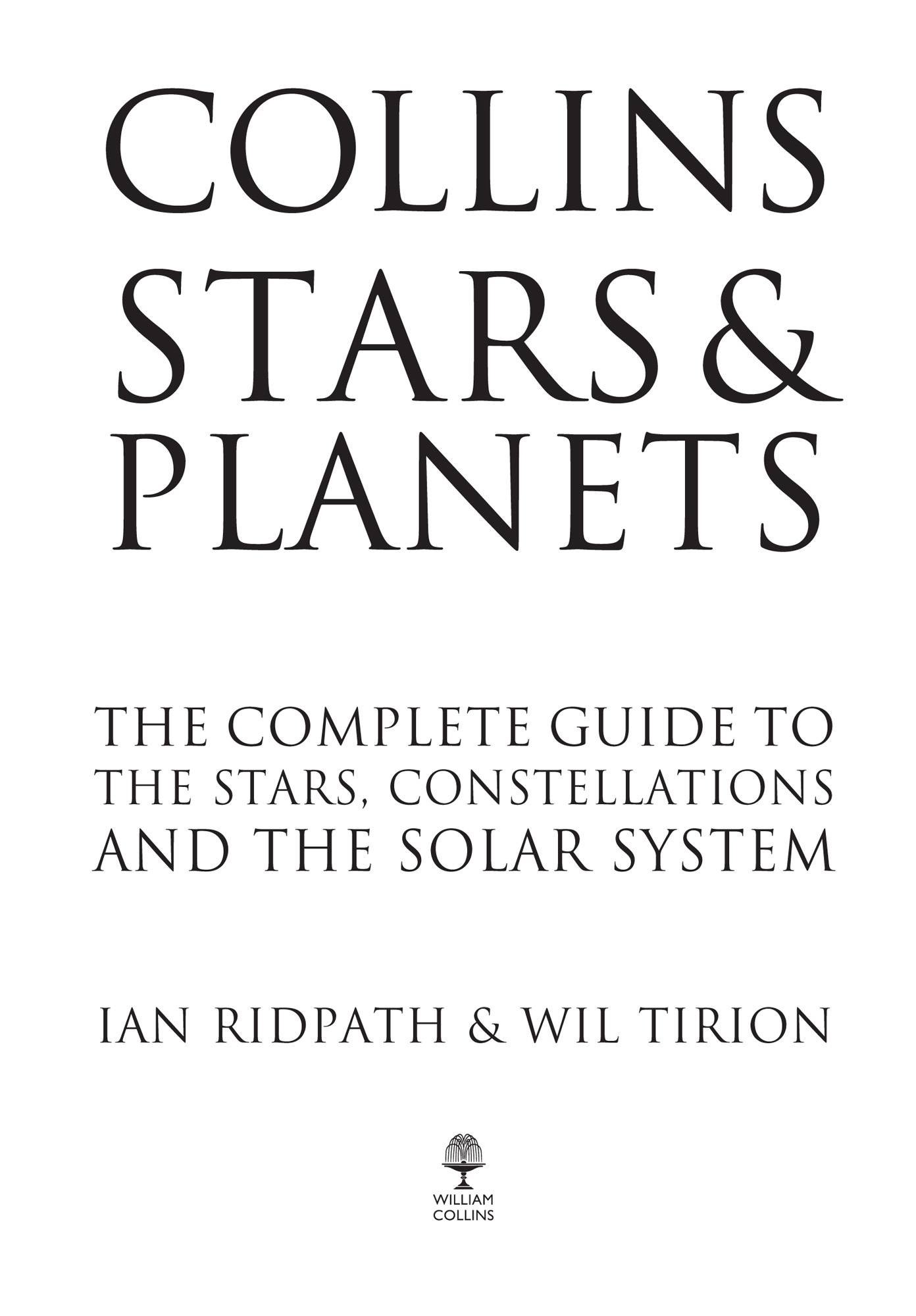
William Collins
An imprint of HarperCollinsPublishers
1 London Bridge Street
London SE1 9GF
WilliamCollinsBooks.com
This eBook edition published by William Collins in 2016
www.collins.co.uk/starsandplanets
First published in 1984 as Collins Pocket Guide: Stars and Planets
This revised and updated fifth edition published in 2017
Text Ian Ridpath 1984, 1993, 2000, 2007, 2017
Sky charts and diagrams Wil Tirion 1984, 1993, 2000, 2007, 2017
Cover photograph NASA
The authors assert their moral right to be identified as the authors of this work. All rights reserved.
A catalogue record for this book is available from the British Library.
All rights reserved under International and Pan-American Copyright Conventions. By payment of the required fees, you have been granted the non-exclusive, non-transferable right to access and read the text of this eBook on-screen. No part of this text may be reproduced, transmitted, downloaded, decompiled, reverse engineered, or stored in or introduced into any information storage and retrieval system, in any form or by any means, whether electronic or mechanical, now known or hereinafter invented, without the express written permission of HarperCollins Publishers.
Source ISBN: 9780008239275
Ebook Edition November 2017 ISBN: 9780008239268
Version: 2017-11-28
CONTENTS
The night sky is one of the most beautiful sights in nature. Yet many people remain lost among the jostling crowd of stars, and are baffled by the progressively changing appearance of the sky from hour to hour and from season to season. The charts and descriptions in this book will guide you to the most splendid celestial sights, many of them within the range of simple optical equipment such as binoculars, and all accessible with an average-sized telescope of the type used by amateur astronomers.
It must be emphasized that you do not need a telescope to take up stargazing. Use the charts in this book to find your way among the stars first with your own eyes, and then with the aid of binoculars, which bring the stars more readily into view. Binoculars are a worthwhile investment, being relatively cheap, easy to carry and useful for many purposes other than stargazing.
Stars and planets
In the night sky, stars appear to the naked eye as spiky, twinkling lights. Those stars near the horizon seem to flash and change colour. The twinkling and flashing effects are due not to the stars themselves but to the Earths atmosphere: turbulent air currents cause the stars light to dance around. The steadiness of the atmosphere is referred to as the seeing. Steady air means good seeing. The spikiness of star images is due to optical effects in the observers eye. In reality, stars are spheres of gas similar to our own Sun, emitting their own heat and light.
Stars come in various sizes, from giants to dwarfs, and in a range of colours according to their temperature. At first glance all stars appear white, but more careful inspection reveals that certain ones are somewhat orange, notably Betelgeuse, Antares, Aldebaran and Arcturus, while others such as Rigel, Spica and Vega have a bluish tinge. Binoculars bring out the colours more readily than the naked eye does. , explains more fully the different types of star that exist.
By contrast, planets are cold bodies that shine by reflecting the Suns light. They too are described in more detail in Section II, from
About 2000 stars are visible to the naked eye on a clear, dark night, but you will not need to learn them all. Start by identifying the brightest stars and major constellations, and use these as signposts to the fainter, less prominent stars and constellations. Once you know the main features of the night sky, you will never again be lost among the stars.
Constellations
The sky is divided into 88 sections known as constellations which astronomers use as a convenient way of locating and naming celestial objects. Most of the stars in a constellation have no real connection with one another at all; they may lie at vastly differing distances from Earth, and form a pattern simply by chance. Incidentally, when astronomers talk of an object being in a given constellation they mean that it lies in that particular area of sky.
Some constellations are easier to recognize than others, such as the magnificent Orion or the distinctive Cassiopeia and Crux. Others are faint and obscure, such as Lynx and Telescopium. Whether large or small, bright or faint, each constellation is given a separate chart and description in this book.

Constellations: Stars in a constellation are usually unrelated to one another. Above, the stars of Crux, the Southern Cross, are shown as they appear from Earth, left, and in a 3D view as they actually lie in space, right. (Wil Tirion)
The main constellations were devised at the dawn of history by Middle Eastern peoples who fancied that they could see a likeness to certain fabled creatures and mythological heroes among the stars. Of particular importance were the 12 constellations of the zodiac, through which the Sun passes during its yearly path around the heavens. However, it should be realized that the astrological signs of the zodiac are not the same as the modern astronomical constellations, even though they share the same names.
Our modern system of constellations derives from a catalogue of 48 compiled by the Greek astronomer Ptolemy in AD 150. This list was expanded by navigators and celestial mapmakers, notably the Dutchmen Pieter Dirkszoon Keyser (c. 154096) and Frederick de Houtman (15711627), the Pole .
Keyser and de Houtman introduced 12 new constellations, and Lacaille 14, in parts of the southern sky not visible from Mediterranean regions; Hevelius and others invented constellations to fill in the gaps between the figures recognized by the Greeks. The whole process sounds rather arbitrary, and indeed it was. A number of the newly devised patterns fell into disuse, leaving a total of 88 constellations that were officially adopted by the International Astronomical Union (IAU), astronomys governing body, in 1922 (see the ).
As well as the officially recognized constellations, you can find other patterns among the stars called asterisms. An asterism can be composed of stars belonging to one or more constellations. Well-known examples are the Plough or Big Dipper (part of Ursa Major), the Square of Pegasus, the Sickle of Leo and the Teapot of Sagittarius.
Star names
The main stars in each constellation are labelled with a letter of the Greek alphabet, the brightest star usually (but not always!) being termed (alpha). Notable exceptions in which the stars marked (beta) are in fact the brightest include the constellations Orion and Gemini. The entire Greek alphabet is given in the .
Particularly confusing are the southern constellations Vela and Puppis, which were once joined with Carina to make the extensive figure of Argo Navis, the ship of the Argonauts. As a result of Argos subsequent trisection, neither Vela nor Puppis possesses stars labelled or , and there are gaps in the sequence of Greek letters in Carina as well.
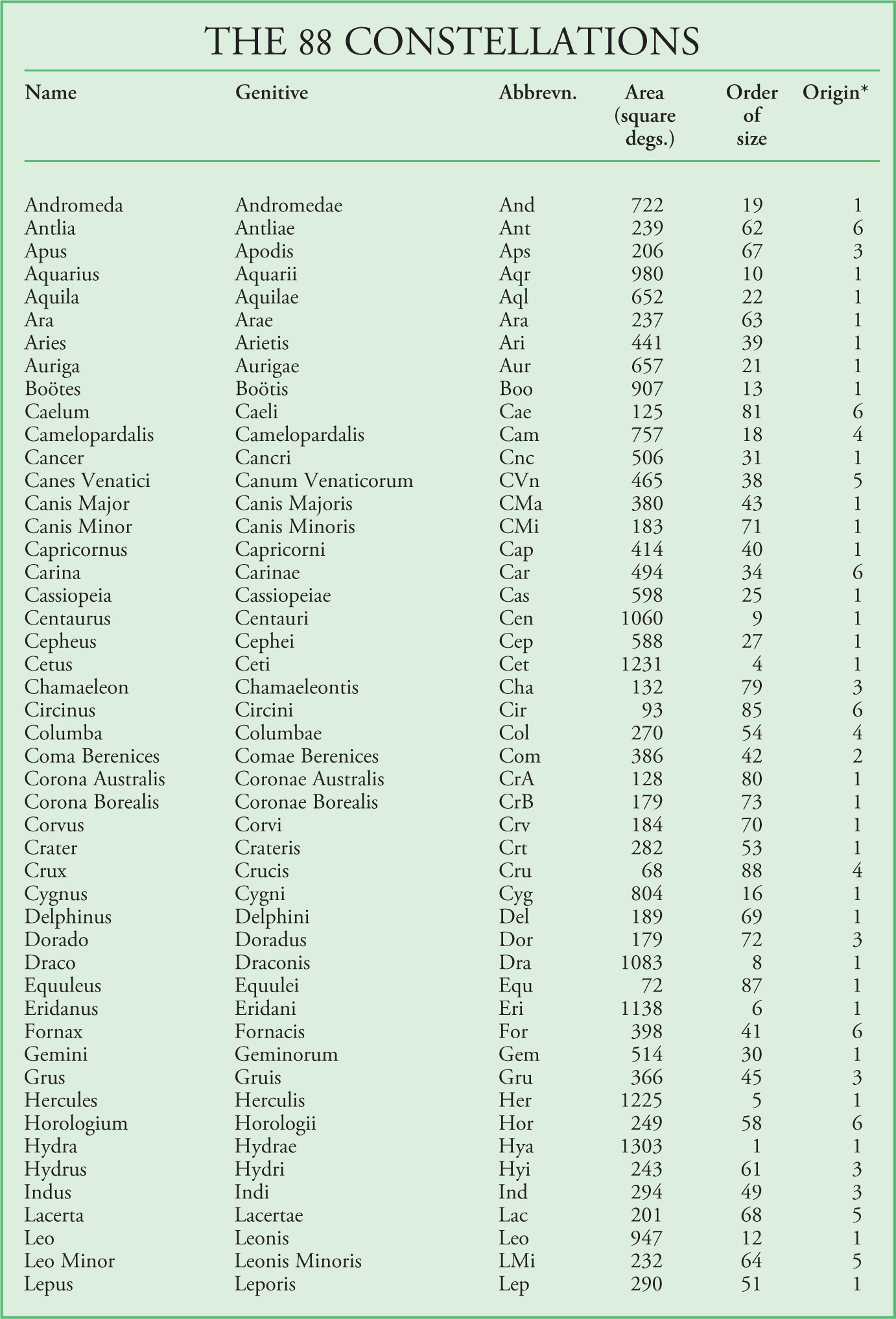
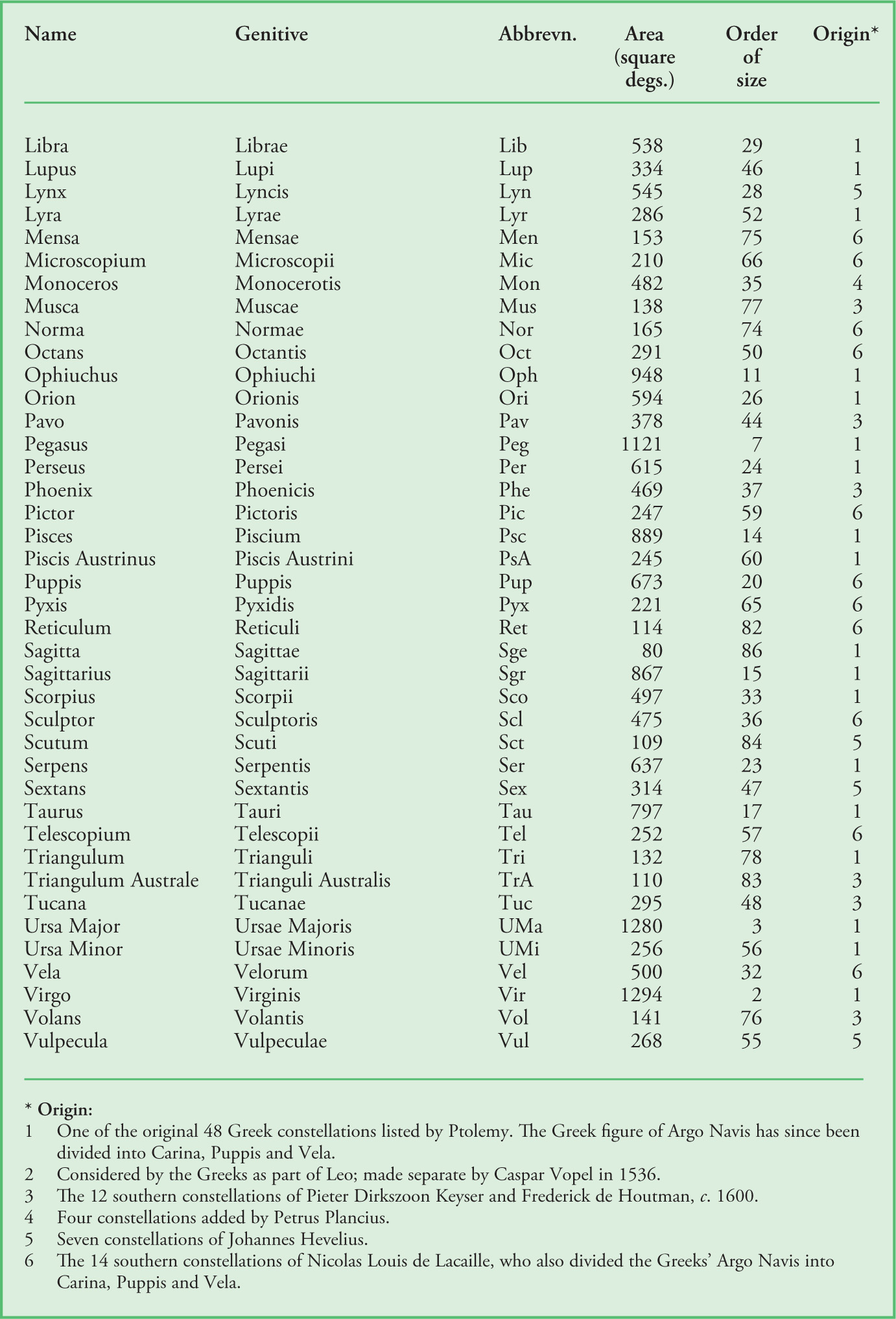
Font size:
Interval:
Bookmark:
Similar books «Collins Stars and Planets Guide»
Look at similar books to Collins Stars and Planets Guide. We have selected literature similar in name and meaning in the hope of providing readers with more options to find new, interesting, not yet read works.
Discussion, reviews of the book Collins Stars and Planets Guide and just readers' own opinions. Leave your comments, write what you think about the work, its meaning or the main characters. Specify what exactly you liked and what you didn't like, and why you think so.


